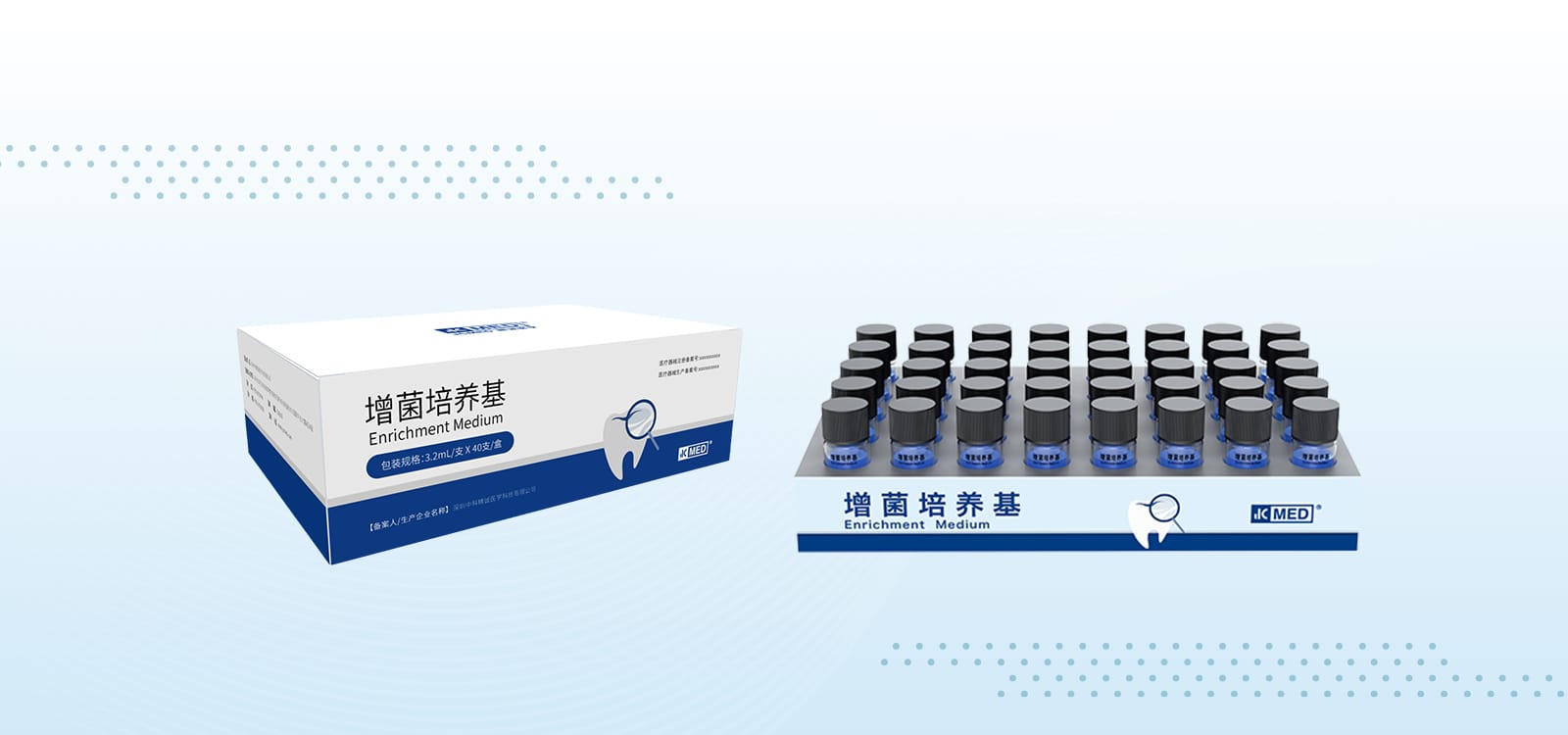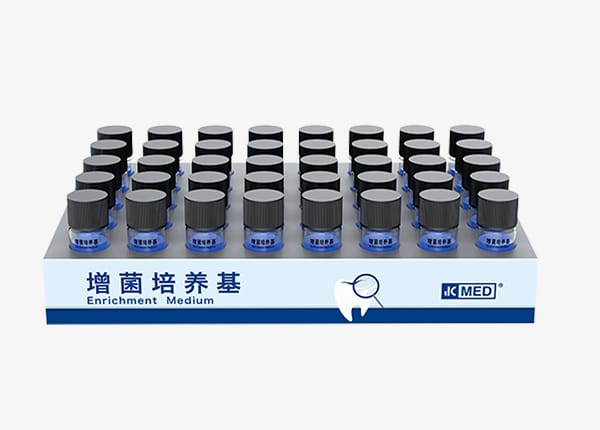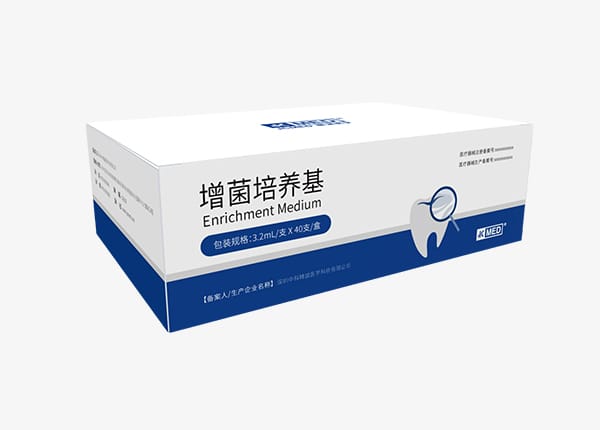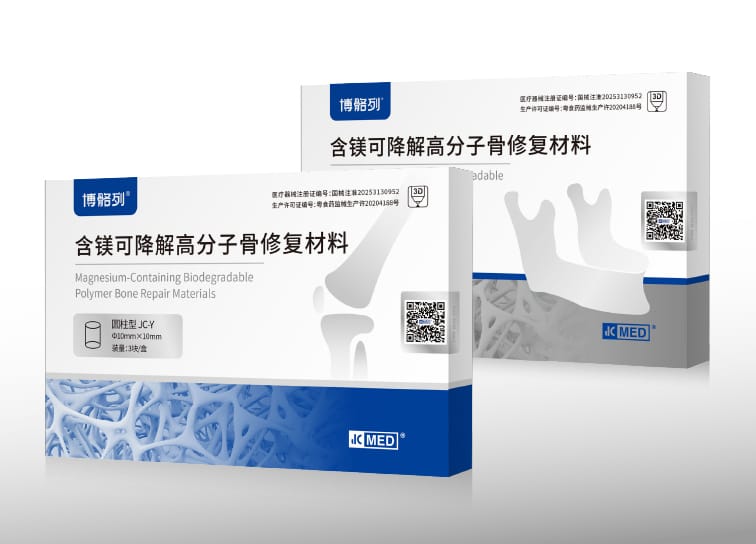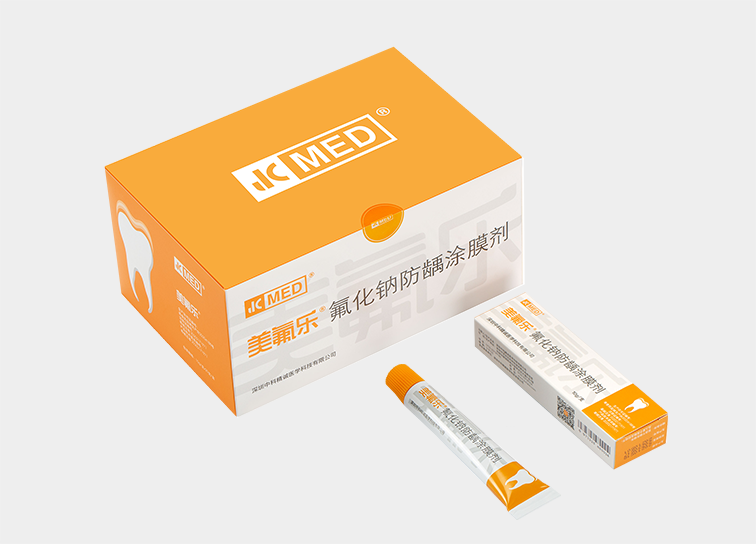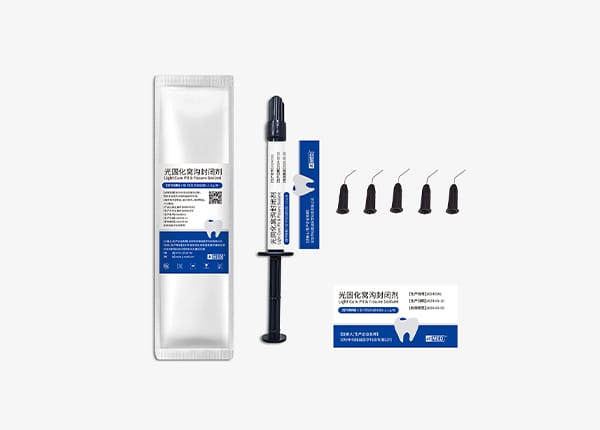Enrichment Medium
Specifications: 3.2 mL per tube, 40 tubes per box
Composition Structure: Primarily composed of water, sucrose, pancreatic peptone, sodium chloride, bromocresol green, and bromocresol purple.
Scope of Application: Clinically used to evaluate the relative levels of acid-producing bacteria on the tooth surface, reflecting the risk of dental caries.
Technical Principle
The enrichment medium can replicate in vitro the acid-producing metabolic capacity of microorganisms in dental plaque, particularly cariogenic acid-producing bacteria. The more acidic products formed through metabolism, the lower the pH value of the system, and the more yellow the color displayed by the bromocresol indicator.
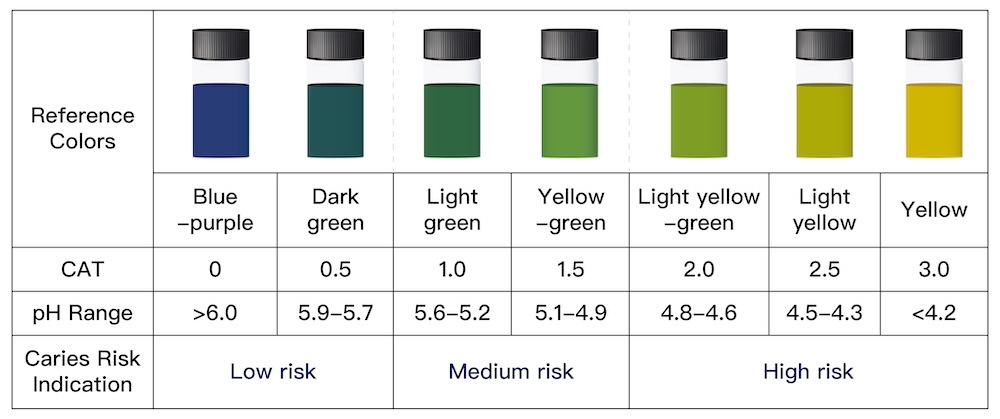
Testing Method
1. Use a sterile cotton swab to wipe the buccal side of the maxillary molars and the labial side of the mandibular anterior teeth near the cervical area 3–5 times.
2. Place the cotton swab into the reagent bottle, then place the reagent bottle into the tray and label it appropriately.
3. Incubate at 37°C in a constant-temperature incubator for 24 hours.
4. After a noticeable color change in the medium, interpret the enrichment results.
Sample Requirements
1. Applicable Sample Type: Dental plaque
2. Sample Collection and Storage: Select a suitable, clean sampling device (swab, cotton swab, etc.) to wipe the buccal side of the maxillary molars and the labial side of the mandibular anterior teeth near the cervical area 3–5 times to collect the bacterial sample for culturing. After sampling, immediately place the sampler into the medium, gently stir to ensure thorough mixing, let it stand for 1 minute, discard the sampler, and cap the sample. Store samples at room temperature for no more than 2 hours or at 2–8°C for no more than 24 hours.
Note: During the sampling process, if significant bleeding occurs, stop the procedure immediately and ensure the sampling site is cleaned and treated. Refrigerated samples must be returned to room temperature before starting enrichment culturing.
